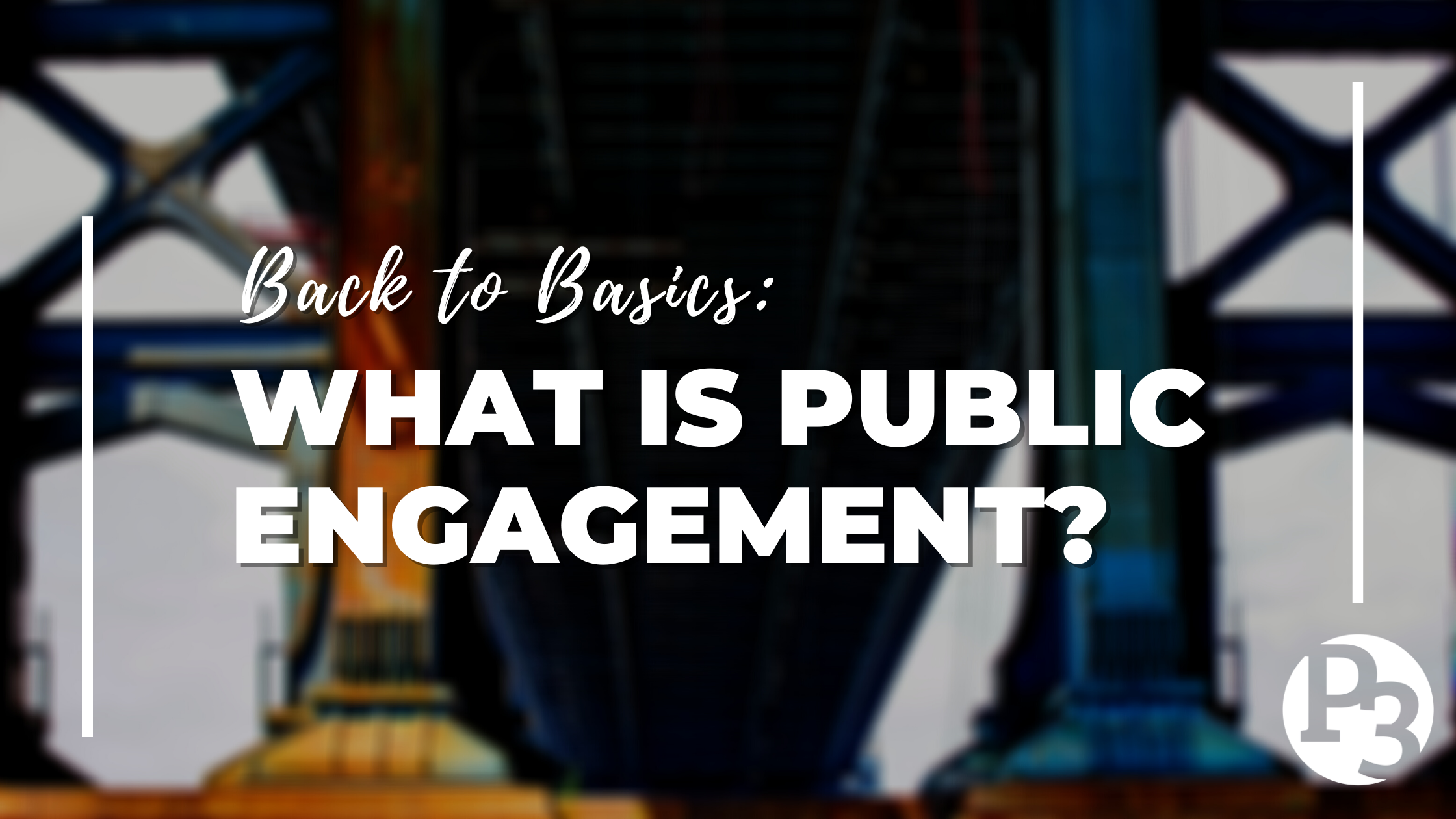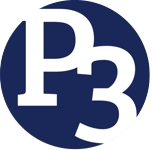
29 Jan Back to Basics: What is Public Engagement?
Public engagement is the foundation of what we do every day, but what exactly does that mean? What is public engagement? To put it simply, public engagement is the process of communicating with the public and involving them in problem-solving or decision-making. This could be decisions on roadway alternatives, new park improvements, community center improvements, and more! The key is that public engagement seeks to meaningfully involve community members in on-going projects so that their voices and perspectives are heard and understood. It then seeks to use their input to make sustainable decisions that affect their communities.
Who is the public? The public can involve community members, residents, business owners, students, workers, travelers, and more within the community you are studying. These members make up the public and may have an interest in or be impacted by your project.
Public engagement is something that should be done continuously throughout a project to allow an agency to fully understand public opinions, needs, and concerns. It is not just about gathering feedback, but also listening to community members and building a relationship based on mutual trust, respect, and understanding.
The ultimate goal of any public engagement process is to include the public in decision-making. Depending on the project and the public’s level of participation (remember the IAP2 chart we discussed before?!) and influence, their impact on decisions may vary. Nonetheless, it is the duty of an agency to communicate with the public and engage them in a manner that best fits a particular project.
Why does it matter?
Why do we put so much effort into public engagement? Why not just make a decision and hope it is in the best interests of everyone in the community? It would certainly be easier to go this route. However, we believe the best decisions are made when the most people are involved in the process.
Involving the public and encouraging them to participate helps you make alternatives and decisions that represent the desires of the community, many of whom will be impacted by the project. Equitable public engagement is important for representative decision-making, and for increasing overall satisfaction and trust in local government processes. When the public is engaged in the process, decisions are seen as more legitimate, making it less likely that they will be challenged in the future. This ends up being important for timeliness of projects and sticking to intended budgets.
One of our favorite parts of public engagement is that it leads to better communication between agencies and the community. When you have worked to listen to residents and understand their values, you are then better able to explain decisions and rationale in terms the community members understand and relate to. This can create more buy-in for a project, or at the very least prevent a major problem in the future. It also helps make decisions more achievable and sustainable.
Public engagement is a two-way street.
As an agency or planner, you may look at public engagement as something you need to check off your list when working on a project. However, it’s important to remember that public engagement is not just for your project’s benefit; it’s a two-way process that takes part on behalf of members of the public as well. Public engagement helps community members stay informed, get involved in local government, and be empowered to take part in decision-making.
Public engagement is not only about gathering input, but listening to and understanding what community members are sharing. This will help you build relationships with the community and encourage them to participate not only in the current project, but future projects as well. Listening and building relationships during engagement will make all feel welcome and appreciated.
Effective public engagement is equitable, inclusive, and accessible for all.
If you’ve read any of our content before (including our most recent post on our values), you know that three of P3’s pillars of engagement are equity, inclusivity, and accessibility. Public engagement is not effective if it does not encompass these values. It should be the goal to engage all members of a community to ensure that they all feel welcome and have a seat at the table.
There are numerous steps to achieving equitable, inclusive, and accessible public engagement. An agency must make considerations for the specific members that make up their community and create strategies that will effectively engage those populations.
Public engagement is a continuous process.
Public engagement is not a one-and-done ordeal, but something that needs to be done continuously throughout the decision-making process. Most projects will have multiple phases to complete, and one should strive to engage the public during each phase and incorporate their feedback, ideas, and concerns into the project as much as reasonably possible.
The engagement process may not look the same in each phase of engagement. In fact, it is good to consistently analyze your approach and see what efforts can be adapted to better engage the community in future project phases. No engagement will be perfect from the start but developing performance measures and tweaking your approach as you go will put you on a path to effective public engagement!
No one becomes an expert in public engagement overnight, but devising an engagement plan, understanding your community, and working to develop meaningful relationships with them while gaining feedback will go a long way. The public engagement process is crucial for decision-making that involves all members of a community.
Need help with reaching your public engagement goals? Or perhaps need help getting started in the public engagement sphere? We’d be happy to help! Reach out to us and we would love to assist in your next public engagement endeavor!
About the Author: Katie Maynard started her journey with Public Participation Partners as a Community Engagement Assistant in January 2020. When not assisting with public involvement, Katie enjoys reading, traveling to the beach, and spending time with her pets.


Sorry, the comment form is closed at this time.